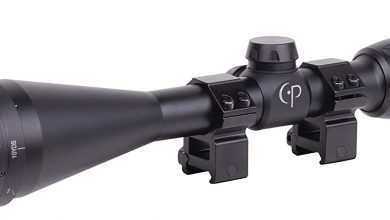Apps to Provide Your Kids with Safe Online Environment
Apps that provide a safer online environment to kids are Mobicip, Safe Eyes Mobile, Net Nanny, and SafetyWeb.

Online safety is one of the essential concerns for parents nowadays. Hardly there will be any child who does not spend time on electronic devices. Even young children use social media to interact with their friends. There is no denying that the internet has eased life, but it has also brought some challenges.
Research has proved that more than 50% of young children are the victim of some cyberbullying. Further, most of the children by the age of 10 get exposed to adult content like pornography. Online threats are ubiquitous, and there is no permanent solution to it, but you can manage to deal with them.
Even though you think it is too early to take a precaution, you never know when your child becomes the victim of cyberbullying or gets exposed to inappropriate content. You will be surprised to know that over 60% of children do not tell their parents when they come in the contact of inappropriate things out of nowhere.
It can take a toll on the mental and physical health of your child if you do not address it immediately. Here are the apps you can use to provide your kids with a safe online environment.
Mobicip
Mobicip is the best parental control software you can use to protect your kids from being the victim of cyberbullying. You can connect all devices to the app and monitor all of them to ensure that your child is safe and not in contact with threatening content. To protect your kids from online threats, you need to restrict the usage of electronic devices.
Though it is okay if they use tabs and iPods to read and write and use social media platforms to chat with people, excessively usage leads to destruction. This app can schedule screen time limit for each device.
The app can also help you track the location of your child. However, this feature is feasible only if your kids are using Android and iOS. The app will also let you review 4 weeks of browsing history. You can block video streaming apps and social media games. The app ensures that your child is in a safe environment.
Safe Eyes Mobile
Safe Eyes Mobile app is exclusively available on iPhones. You can use this app to control your child activities. There are several websites you will never want your child to access. This app allows you to block websites to promote pornography, nudity, voyeurism, and the like.
Net Nanny
Net Nanny is the advanced software. It uses artificial intelligence to block invalid content before your kids watch it. Other apps use traditional methods to prevent your kids from accessing dangerous content. Still, modern technology enables the app to monitor or analyse every time if the link your kids’ click or the URL they type into the search bar is safe for them.
You can use this app to track the digital habits of your kids and protect them from harmful content. You can manage the screen time, so your kids do not get addicted to the usage of such electronic devices. This app provides a more effective way to filter content to keep your kids safe. You can use this software to block apps on your children’s mobile phones and tabs. You can also restrict them from accessing adult content.
Over 80% of children get exposed to inappropriate content by the age of 10. Use this software application to provide a safe online environment for your children. This app will cost you a little money, but it is worthwhile. In case you are currently struggling with your finances, you can take out payday loans with direct lenders.
SafetyWeb
SafetyWeb app can help you track activities of your children on social networking sites. It can monitor text, messages and images they share with their friends over social media sites. You can get an immediate alert if your child’s activity is considered suspicious.
The app can provide a safe online environment for your kids by scouring the web for risky activities. It will notify you about videos and images your kids are sharing through online platforms. It is the best app to prevent cyberbullying. It can also ensure the privacy about personal information of your kids.
Social Shield
Like other apps, Social Shield also aims to provide online safety to your kids when they access a website or social networking sites. However, note that this is not an app. It uses the Cloud to operate. It can track all activities of your children they perform on their PCs or mobile phones.
Social Shield can scan millions of images, videos and other records to see if there is something that should raise the alarm bells. It will immediately report you if your children seem to be in contact with someone that can pose a threat or danger.
Apps mentioned above can help you provide your kids with a safe online environment. All these apps will require monthly subscriptions. If you are running out of money, you can take out doorstep loans near me. Do not compromise with the safety of your kids due to monetary issues.






